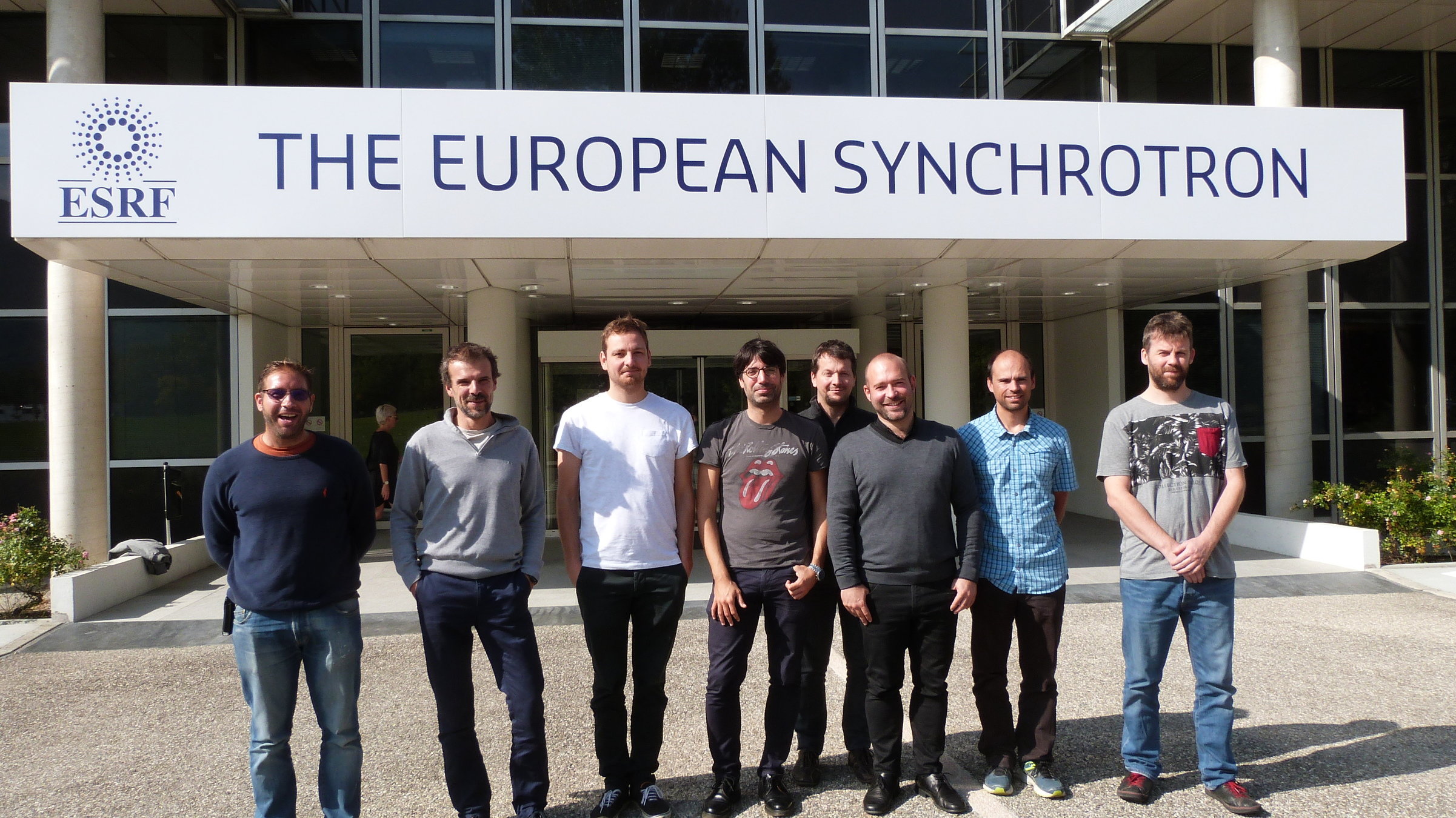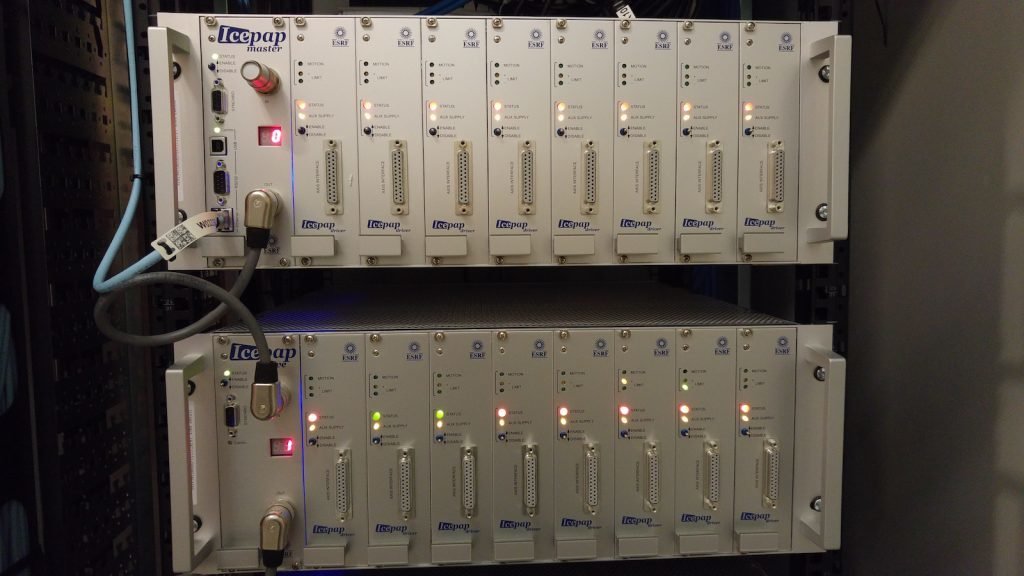BLISS:
experiments control
of EBS beamlines
presented by the BLISS team
Beamline Control Unit, Software Group
ESRF, Grenoble, France

ISDD Seminar
16-10-2017
The BLISS core development team

A. Homs
E. Papillon
J. Bodera
C. Guilloud
J. Bodera
M. Guijarro
T. Coutinho
S. Petitdemange
V. Michel
BLISS =
BeamLine Instrumentation Support Software
Why BLISS ?
spec: 26 years driving experiments at ESRF
-
Direct control of devices
- easier to debug
- restarting = reset
-
Integrated tool
- configuration
- controllers for all kinds of devices
- plotting
- Server mode to connect with external processes (GUI...)
- Commercial support
- Poor macro language
- No extensibility
- Single task operation
- Exclusive hardware control
- Per-session configuration, no sharing
- No built-in continuous scan framework
- Limited data management
- No code ownership, less freedom
spec: 26 years driving experiments at ESRF
Limitations
Workarounds
Maintenance cost
The path to BLISS
-
Python library + tools
-
Technical choices
-
Beacon: services for BLISS
-
Configuration example
-
Scanning & data acquisition
-
Online data publishing and visualisation
BLISS Python library and tools
BLISS Python library and tools
Embed into any Python program
>>> from bliss.common.axis import Axis
>>> from bliss.controllers.motors import IcePAP
>>> iceid2322 = IcePAP.IcePAP("iceid2322",
{"host": "iceid2322"},
[("mbv4mot", Axis, { "address": 1,
"steps_per_unit": 80,
"velocity": 125,
"acceleration": 500
}
)], [])
>>> iceid2322.initialize()
>>> m = iceid2322.get_axis("mbv4mot")
>>> m.velocity()
125.0
>>> m.acceleration()
500.0
>>> m.position()
252.23750000000001
>>>
BLISS Python library and tools
Command Line Interface based on ptpython
matias@kashyyyk:~ % bliss -s test_session
test_session: Executing setup...
Initializing 'heater`
...
Initializing 's1hg`
Done.
>>> ascan(m1, 0, 10, 30, 0.1, diode, save=False)
Total 30 points, 3.0 seconds
Scan 4 Mon Sep 11 11:58:03 2017 <no file> test_session user = guijarro
ascan m1 0 10 30 0.1
# timestamp m1 diode
0 1.50512e+09 0 499.112
1 1.50512e+09 0.345 500.799
...
28 1.50512e+09 9.655 505.622
29 1.50512e+09 10 499.883
BLISS Python library and tools
Configuration web application
BLISS Python library and tools
Graphical interface for users: interactive web shell

BLISS technical choices
BLISS key concepts





All I/O based on gevent
cooperative multi-tasking
Direct hardware control
Distributed control ownership & shared state
Persistent settings
cache
Transient data store
Scan acquisition chain, represented as a tree


BLISS modular architecture


online data analysis
data visualisation

data archiving
Beacon:
services for BLISS
(presented by T. Coutinho)
Beacon static configuration service
Web interface for configuration editing
Beacon server



.yml
Devices & sequences configuration in YAML format
Sessions to group
objects
Python setup file
User scripts
Can replace TANGO DB
Conversion script provided

Configuration web application DEMO
Beacon dynamic services

Beacon server,
services built on top of

Transient data store

Persistent settings cache
Message broker
- state sharing
- distributed lock

BLISS Hardware Control
Direct hardware control


Demo: sensor with direct hardware control
BLISS scans
(presented by
S. Petitdemange)
BLISS scans
-
Acquisition chain
- a tree with master & slave nodes
- master triggers data acquisition
- slave takes data
-
AcquisitionMaster, AcquisitionDevice
- wrappers around BLISS control objects
-
Data writer
- HDF5
Scans demo
Model for organizing acquired data
-
Mirroring of the Acquisition Chain tree
-
each device in the chain has a name
-
each device define 1 or more 'AcquisitionChannel' objects
-
-
Acquisition channels
-
must have a name, a type and a shape
-
-
Metadata
-
scan_info dictionary ({ key: value, ... }) associated with scans
-
Online data publishing
-
While a scan is running, data is published to the redis database provided by Beacon
-
scalar values are stored directly
-
bigger data (images, spectra) is just referenced
-
configurable time to live (TTL)
-
- Any external process can access redis data to perform online data analysis, for example
![]()
Online data publishing demo
Conclusion
Project state
-
Current state of deployment
- MX beamlines are already running BLISS
- 3 more beamlines (Materials Science) for the end of the year
- Full deployment in 2020
- Project is in active development

Conclusion
- Long term project for EBS beamlines
- Control paradigm: keep what works, add new concepts
- Python scanning framework
- Prepared for current and future challenges
- scans with online feedback
- data management
- evolutive platform
BLISS ISDD Seminar
By Matias Guijarro
BLISS ISDD Seminar
- 1,188



